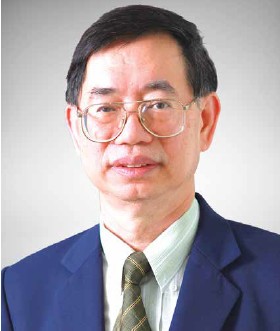Etiology of size based pulmonary nodules in Asia.
Main Article Content
Abstract
OBJECTIVE: To determine whether the American College of Chest Physicians’ lungnodule screening recommendation is an effective tool in diagnosing Asian patientswith pulmonary nodules.
MATERIALS AND METHODS: This is a retrospective study of 36 patients from2012-2014 that were identified to have had pulmonary nodules through chest CT scanresults. The data collected from patients were evaluated then illustrated to find out thenature of lung nodules among Asian population. The pulmonary nodule is based onsize alone regardless of other morphology for instance border, calcification etc.RESULTS: Out of 36 patients, 23 were diagnosed with tuberculosis (TB), 19 testedpositive for lung malignancy, 5 cases of TB co existing with cancer and 6 cases ofnon-tuberculous mycobacterium (NTM) infection. The types of lung cancer foundwere 7% small cell lung cancer, 7% squamous cell lung cancer and 86% adenocarcinoma.Nodule sizes were classified into 3 groups according to measurement. 4.5-11 mm (100%TB and 0% cancer), 12-20 mm (60% TB and 40% cancer) and 21-88 mm (52% TBand 48% cancer).
CONCLUSION: Lung nodule evaluation among Asian patients requires specific guidelinesthat consider the high prevalence of tuberculosis and other infections. The statisticalresults from our study proves that the American College of Chest Physicians’ lung nodulescreening recommendation, if practiced by Asian physicians, should be revised accordingto the current health status and presence of other diseases of the Asian population.
Article Details
This is an open access article distributed under the terms of the Creative Commons Attribution Licence, which permits unrestricted use, distribution, and reproduction in any medium, provided the original work is properly cited.
References
2. Hansell DM, Bankier AA, MacMahon H, et al. Fleischner Society: glossary of terms for thoracic imaging. Radiol- ogy 2008;246:697-722.
3. Khuhaprema T. Current Cancer Situation in Thailand. Thai J Toxicology: 1st National Conference in Toxicology November 2008. Thai J Toxicology 2008;23(2):60-1.
4. Jaklitsch MT, Jacobson FL, Austin JH, et al. The Ame- rican Association for Thoracic Surgery guidelines for lung cancer screening using low-dose computed tomography scans for lung cancer survivors and other high-risk groups. J Thorac Cardiovasc Surg2012;144(1):33-lines- older-people-type-2-diabetes.)
5. Bai C, Choi CM, Chu CM, et al. Evaluation of pulmonary nodules: clinical practice consensus guidelines for Asia. Chest 2016;pii: S0012-3692.
6. National Lung Screening Trial Research Team, Aberle DR, Adams AM, et al. Reduced lung-cancer mortality with low-dose computed tomographic screening. N Engl J Med 2011 Aug 4;365(5):395-409.
7. Yu YH, Liao CC, Hsu WH, et al. Increased lung cancer risk among patients with pulmonary tuberculosis: a popu- lation cohort study. J Thorac Oncology 2011;6(1):32-7.
8. Saenghirunvattana S, Saenghirunvattana C, Gonzales MC, et al. Verification of mayo clinic formula to deter mine lung cancer probability among patients living in tuberculosis endemic areas. Poster presentation Ameri- can Thoracic Society (ATS) 2016.
9. World Health Organization. Global tuberculosis report 2014. Geneva Switzerland. (Accessed Dcember 10, 2015 at http://apps.who.int/iris/bitstream/10665/137094/1/978 9241564809_eng.pdf. ISBN 978 92 4 156480 9 (NLM classification: WF 300).
10. Vento S, Lanzafame M. Tuberculosis and cancer: a complex and dangerous liaison. Lancet Oncol 2011;12(6):520-2.
11. Wu J, Dalal K. Tuberculosis in Asia and the pacific: the role of socioeconomic status and health system develop- ment. Int J Prev Med 2012;3(1):8-16.
12. Engels EA, Shen M, Chapman RS, et al. Tuberculosis and subsequent risk of lung cancer in Xuanwei, China. Int J Cancer 2009;124(5):1183-7.
13. Lam WK. Lung cancer in Asian women-the environment and genes. Respirology 2005;10(4):408-17.
14. Yan SP, Luh KT. Primary lung cancer in Asia. Bronchus 1986;2:6-8.
15. Saenghirunvattana S, Tesavibul C, Saenghirunvattana R, et al. Higher incidence of lung cancer in passive smok ers. Bangkok Med J 2013;5:13-7.
16. Zhou W, Christiani DC. East meets West: ethnic differ- ences in epidemiology and clinical behaviors of lung can cer between East Asians and Caucasians. Chin J Cancer 2011;30(5):287-92.
17. Xu ZY, Brown L, Pan GW, et al. Lifestyle, environ- mentalpollutionandlungcancerincitiesofLiaoninginnorth- eastem China. Lung Cancer 1996;14 Suppl 1:S149-60.
18. Wu-Williams AH, Dai XD, Blot W, et al. Lung cancer among women in north-east China. Br J Cancer 1990;62 (6):982-7.
19. 19Nakachi K, Limtrakul P, Sonklin P, et al. Risk factors for lung cancer among Northern Thai women: epidemiologi cal,nutritional, serological, and bacteriological surveys of residents in high- and low-incidence areas. Jpn J Cancer Res 1999;90(11):1187-95.
20. Swensen SJ, Jett JR, Hartman TE. CT screening for lung cancer: five-year prospective experience. Radiology 2005;235(1):259-65.
21. LeungA,SmithR.20May2007.Solitarypulmonarynodule: benign versus malignant differentiation with CTand PET -CT. (Accessed December 10, 2015 at http://www.radio- logyassistant.nl/en/p460f9fcd50637/solitarypulmonar ynodu-lebenign-versus-malignant.html).


